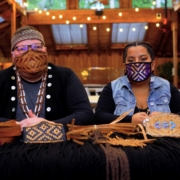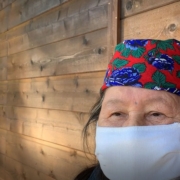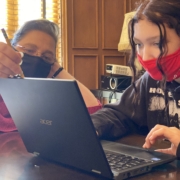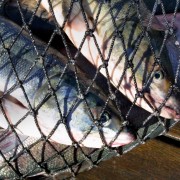Suquamish Government Picks Moderna Vaccine for Distribution to Tribal Community
Tribe Now Entering Critical Period to Prevent Spread of Disease
The Suquamish Tribal Council, following the recommendation of the Tribe’s Public Health Officer, Dr. Barbara Hoffman, has decided to provide the Moderna COVID-19 vaccine to Tribal membership and staff as it becomes available.
The Moderna vaccine is expected to gain approval for emergency use from the Food and Drug Administration this week. While it remains unclear how quickly mass vaccinations will begin, Tribal officials expect the first small batches of doses to begin arriving shortly after the New Year with additional supplies increasing over the following weeks.
Tribal officials have prioritized vaccinations to Elders and those most at-risk from COVID-19, as well as continuity of government to ensure leaders and critical staff are able to keep distribution moving.
“We’re starting to see the light at the end of the tunnel, but that tunnel is still pretty long,” says EOC Manager Cherrie May. “It will still be several months before we can get everyone vaccinated.”
That’s why it is so important for everyone to continue staying focused on preventing the spread of the virus.
“Wear your masks, keep your distances, and please – please – don’t gather outside your immediate households. I know that will be hard during the holidays, but it is so important. We really can pull together right now, by staying apart.”
Kitsap County and the Suquamish Tribe, like much of the country, is seeing a surge in positive cases. The spike is largely attributed to extended families and friends gathering together for Thanksgiving.
“Let’s not make that same mistake here over Christmas and New Year’s,” says May. “The risk is too big. The consequences are too severe. The lives of our loved ones are at stake.”
Picking Moderna
Meanwhile, Tribal staff are hard at work preparing for vaccine distribution.
The Tribal Council had the choice of two vaccines — one offered by Pifzer and the other by Moderna.
“In close consultation with our medical experts, we determined the Moderna vaccine provided the best option for our community,” says Hoffman.
The vaccines are more similar than they are different, with the exception of how they are stored
The Moderna vaccine is about 95 percent effective. It requires two doses, about a month apart, to achieve that high level of effectiveness. This is a new type of vaccine that helps people create virus-fighting antibodies without actually infecting them with COVID-19.
And, finally, some people will feel the same short-term, flu-like side effects from either vaccine. Health experts at FDA and CDC stress that most side effects are a sign that the vaccine is working as intended.
Unlike the Pfizer vaccine, which has more demanding frozen storage and distribution protocols, Moderna’s vaccine can be stored four degrees below zero, which is a standard freezer temperature. After it’s thawed, it can be administered for up to 30 days.
“The logistics of providing the vaccine to the entire Tribal community will be unprecedented for us,” says May. “A lot of work is going into planning and preparing for that, so getting the increased flexibility that Moderna gives us is huge.”
Side effects are a good sign
They may not feel like it at the time, but most side effects from the vaccine are a good thing, say health experts.
“They show the body is doing exactly what it’s supposed to be doing,” says Suquamish Tribe’s Public Health Officer Dr. Barbara Hoffman. “It shows that your immune system is working by creating the antibodies you need to fight off the disease.”
Potential side effects include pain or swelling at the injection site, muscle and joint aches, fever, nausea, and headache.
“The most common side effects noted in vaccine trials were pain and swelling at the injection site,” says Hoffman. “For most study participants, side effects were mild to moderate and subsided within one to three days.
But don’t worry if you don’t feel those side effects, she says. “It’s still working. The vast majority of those who get both doses – and it’s really important everyone gets both doses – will be protected.”










